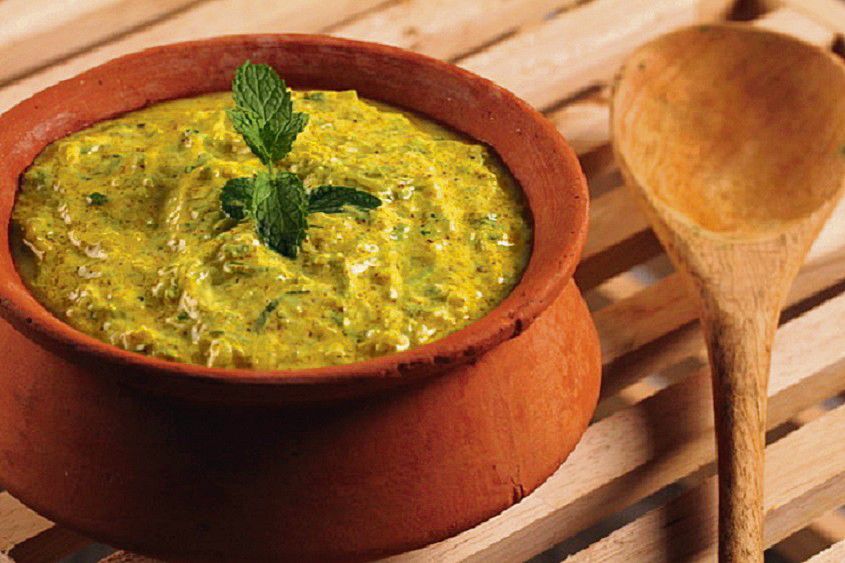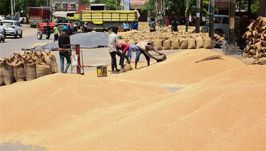
Pahadi Raita
Pushpesh Pant
Can you imagine an Indian meal — lavish or frugal — without raita? It is encountered in many avatars — no-hassle boondi, aloo pyaaz, canned pineapple to the muz chetin of Kashmir, masquerading as chutney. The garlic-mint-based boorani is wedded for life to myriad biryanis. What makes raita even more appealing in the summer is the health benefits of the naturally probiotic dahi with exceptional coolant properties. In South India, they never dispense with the thair sadam (curd rice) course. In the north of Narmada river, the joys of lassi and chhachh are enjoyed all-year round.
To return to raita. Curiously, most of the raitas do not use rai or mustard seeds. The Kumaoni kheere ka raita is the only exception that is renowned for its pungency that easily puts to shade the much-hyped wasabi from Japan. A teaspoonful is enough to let tears of joy flow down your cheeks and the nasal passages clear up, at times dripping embarrassingly. The hosts are pleased as punch when their raita is described as aankh naak kholne wala! At times, the pungency quotient is enhanced by grating radish and sun-dried cucumber and spiking it with potent green chillies.
There are a few who think that raita’s job is to cleanse the palate, but we Indians don’t eat course-wise, so we don’t need the cleansing of palate. Diners combine it with whatever strikes their fancy. Some do it clumsily and have inspired the phrase raita phailana — creating a mess on the plate or pattal. If you don’t like everything hot, a milder raita can be prepared with ripe banana, grapes, dates and raisins, even lightly boiled or blanched green leafy vegetables. In Maharashtra, lal bhoplyancha bharit (boiled or roasted red pumpkin) presents an uninteresting variation on the raita theme. The only raita that seems to deviate from the straight path to a cooked curry is the ripe mango-based Gujarati fajeto. Char-boiled brinjal offers another refreshingly different option. These bring to mind raita-like dips encountered in Turkey and Greece where they are treated as cold salads.
However, nowhere else in the world do we witness such mind-boggling variety in the realm of raita as in our own beloved ‘Bharatvarsha’. In South India, raita becomes the pachadi. The name is derived from the process of pounding the ingredients. The range of vegetables like bitter gourd, snake gourd and lady’s fingers, ginger and amla (Indian gooseberry) are incorporated in pachadis. In Andhra Pradesh, sour gongura (sorrel) leaves’ pachadi is greatly relished. Tamil Nadu offers a delightful ripe mango maampazha pachadi while in Kerala, one can savour a rarely encountered maangani (sarsaparilla) pachadi prepared with small dices of sarsaparilla pickled in brine. Kerala school ayurveda values this root greatly for its many therapeutic properties.
Pachadis are invariably tempered with mustard and fenugreek seeds, along with dried whole red chillies. The quantity of dahi used is much less and its consistency is thinner. This is explained by the fact that curd is included in other courses in a southern meal.
The best thing about raita is that you can prepare it in no time with whatever ingredients are at hand, substituting one for another. Haste can only ruin a well-conceived raita.
Forget about raita as an accompaniment. Properly garnished, it can become the stellar main dish. If the ingredients are carefully chosen, it can become a light, refreshing nutritious lunch or supper. Just remember to treat raita like a main flavourful attraction on the table. Spare the same tender, loving care for it as the other recipes you unveil to dazzle your guests.
Pahadi Raita
Ingredients
Dahi 500ml
Cucumber (large) 1
Radish 1
(scraped, grated, medium)
Rai (mustard seeds) 3 tsp
Jeera powder 1 tsp
Green chillies (chopped) 3-4
Red chilli powder 1/2 tsp
Turmeric powder 1/4 tsp
Ginger (juliennes) 1x2 inch piece
Coriander (chopped) 1 large sprig
Mint leaves 6-9
Salt To taste
Mustard oil 1 tsp
Anardana (optional, for garnish) 2 tbsp
Method
Peel the cucumber and grate it. Discard the seeds. Squeeze the grated cucumber gently to remove excess water. Whisk the dahi and add all the powdered spices along with salt. Grind the rai (mustard) seeds into a coarse paste while adding a little water. Add the rai paste and chopped green chillies and let the raita stand overnight, or at least for 3 hours, for the mustard flavour to seep through. Just before serving, drizzle with raw mustard oil and garnish with anardana, ginger juliennes, coriander and mint leaves.
Join Whatsapp Channel of The Tribune for latest updates.



























